|
|
|||||||||||||||||||||
Apollo-Soyuz project, ASTP In July 1975, the Soyuz-19 spacecraft with two cosmonauts onboard and the US Apollo vehicle with three NASA astronauts conducted a successful rendevous in the orbit around the Earth, becoming a symbol of a short-lived detente period in the Cold War.
Soyuz-19 mission at a glance:
|
|||||||||||||||||||||
| HISTORY OF THE ASTP PROJECT | |||||||||||||||||||||
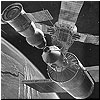 |
Origin of the Apollo-Soyuz project In the early 1970s, Soviet and US officials began work on the joint development of technology for a potential docking in space which led to a formal agreement on a docking mission in 1972. |
||||||||||||||||||||
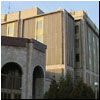 |
Soviet management of the Apollo-Soyuz project (INSIDER CONTENT) Along with many engineering problems, the ASTP project presented major political, security and cultural problems for the Kremlin. Particularly difficult issues were associated with mission control. |
||||||||||||||||||||
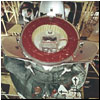 |
Development of the ASTP project Because of the extraordinary exposure of the Soviet space program to the outside world, the Soviet industry also took some unprecedented steps to ensure the success of all aspects of the project. |
||||||||||||||||||||
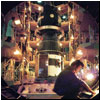 |
Kosmos-638: First rehearsal of a joint mission (INSIDER CONTENT) On April 3, 1974, the USSR launched an unpiloted test version of a modified Soyuz vehicle, which it hoped to eventually use for an orbital docking with the American Apollo spacecraft. |
||||||||||||||||||||
 |
Kosmos-672: the final unpiloted test flight (INSIDER CONTENT) Numerous technical problems and equipment delays hampering the first test flight in April 1974 prompted Soviet officials to add another pilotless launch in August of the same year. It lifted off without much fanfare under the cover name Kosmos-672 on Aug. 12, 1974. |
||||||||||||||||||||
 |
On Dec. 2, 1974, Soyuz-16 went into orbit with a crew of two to test critical hardware and operations for the upcoming docking with the Apollo spacecraft scheduled in the summer of 1975. |
||||||||||||||||||||
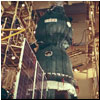 |
Preparing Apollo-Soyuz launch (INSIDER CONTENT) Despite all the efforts, the Soyuz-19 launch campaign in Tyuratam had its share of challenges.
|
||||||||||||||||||||
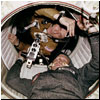 |
Soyuz and Apollo dock in space In July 1975, the Soviet and American spacecraft, launched from two different continents, conducted a successful rendezvous and docking in space for the first time. During two days of joint operations, the two crews made multiple visits to each-other's vehicles and performed another docking and undocking. |
||||||||||||||||||||
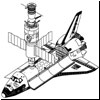 |
The successful completion of the ASTP project inspired both sides to consider new more ambitious cooperative flights, but after several years of discussions, the joint efforts died down, coinciding with worsening political relations between the USSR and the West. | ||||||||||||||||||||
| ASTP TECH | |||||||||||||||||||||
SUPPORT THIS PROJECT! |
|||||||||||||||||||||
Soyuz 7K-TM crew vehicle variant A specialized version of the Soyuz spacecraft originally known as 7K-TM was custom-designed for the joint mission with the US Apollo spacecraft in 1975. It was equipped with a new type of a docking port dubbed APAS for Androgynous Peripheral Attach System. |
|||||||||||||||||||||
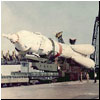 |
Soyuz-U launch vehicle variant (INSIDER CONTENT)
In the course of the ASTP project, the Soviet industry introduced a new variant of the veteran Soyuz rocket, to carry a heavier modified version of the 7K-TM crew vehicle, as well as a wide range of robotic payloads, previously launched by customized boosters. |
||||||||||||||||||||